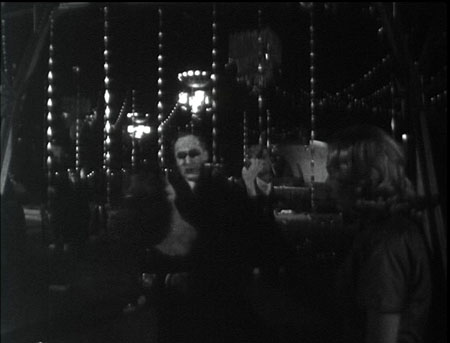Note: In the third reader’s choice poll, 366 readers voted to make La Jetée a candidate for the List of the 366 Best Weird Movies ever made; we’ve upgraded its status accordingly.

DIRECTED BY: Chris Marker
FEATURING: Jean Négroni (narrator), Davos Hanich, Hélène Chatelain (models)
PLOT: After World War III, a man is trained as a time traveler to try to find a cure for the devastation, but he is more interested in locating the woman on a pier whom he briefly glimpsed as a child and whose image burned itself into his memory.

WHY IT WON’T MAKE THE LIST: La Jetée has all the cinematic quality it would need to qualify for the List, and a significant enough level of weirdness to justify inclusion. The film’s only drawback is its length; at a mere 30 minutes, it would need to be ghost-of-Hunter-S.-Thompson-on-a-peyote-trip bizarre in order to take a spot on the List away from a movie that’s three or four times its length. It is, however, a historically important film with links to lots of other weird movies, and any serious student of cinematic surrealism should be sure the name “La Jetée” at least rings a bell.
COMMENTS: The credits introduce La Jetée not as a film, but as a photo-roman (photo-novel). Filmmaker Chris Marker made this experiment, his only significant fiction film, between his usual essay-style documentaries; the story is told entirely through still photographs (with one blink-and-you’ll-miss-it motion sequence), third-person narration, and sound effects. The technique is surprisingly effective and remarkably cinematic, and it dovetails with the movie’s theme of memory; each image is itself like one of the nameless hero’s stored memories, which he accesses as if he’s browsing an interior museum. Sometimes the pictures fit together in sequence to compose a fragmented scene, and other times they make giant leaps into the future or past, in the same way that the mind jumps back and forth between present and past as it composes reality in real time. The story is vague in its details—we get no information about the war that nearly destroyed the world, and the potentially troubling etiquettes of romancing a woman across a gulf of time are glossed over—but we accept the fabulous story more easily and focus on its emotional and intellectual messages better without a lot of distracting Continue reading CAPSULE: LA JETÉE (1962)


